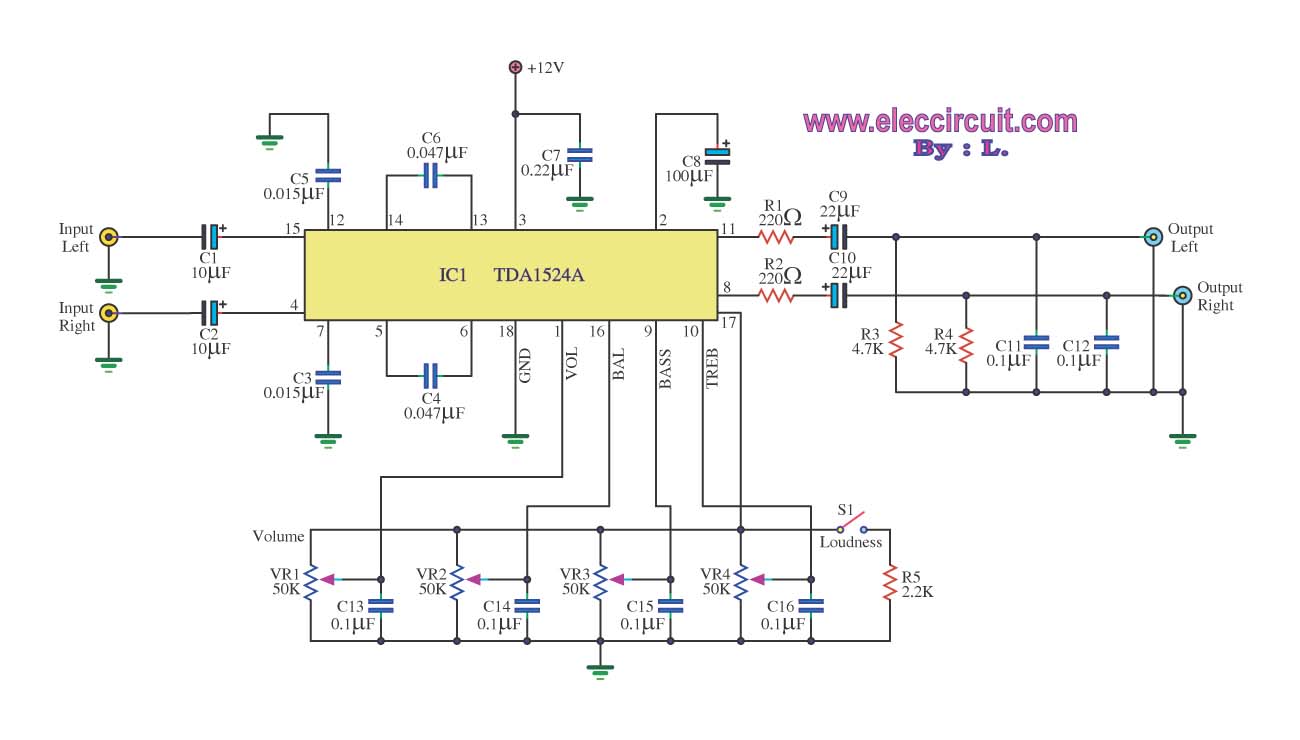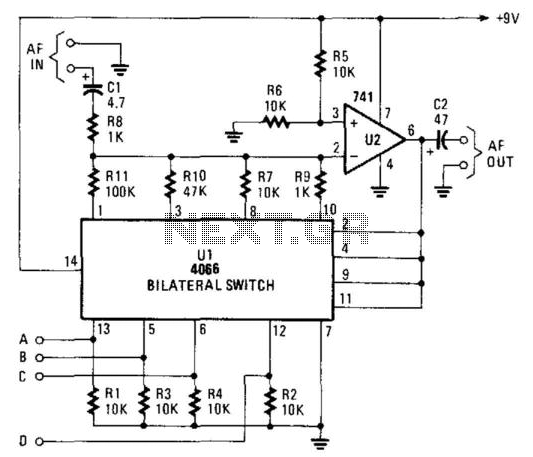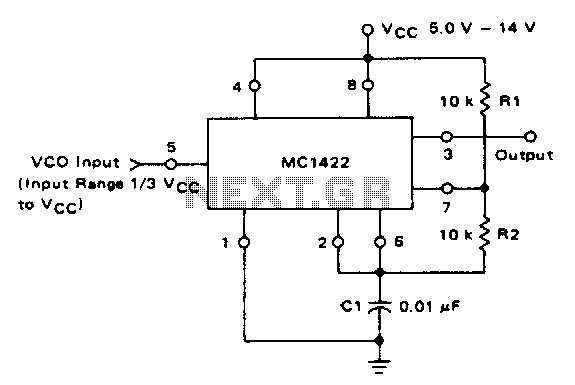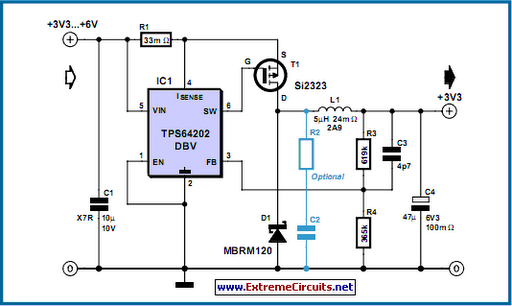
planning build mosfet h bridge motor control
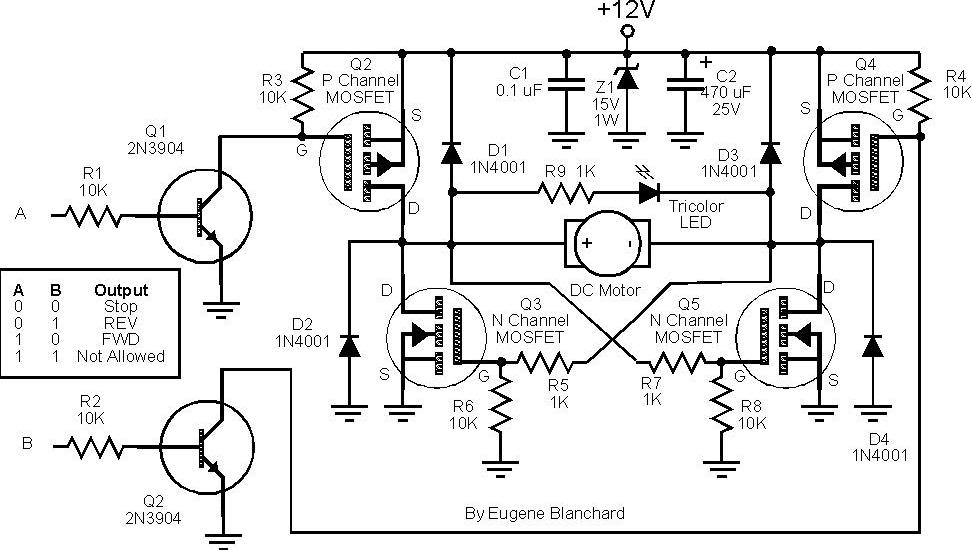
At 9 volts, the maximum stalled current of the motor types intended for use will be 700 mA. The selection of appropriate MOSFETs is crucial, particularly regarding their ratings for current and voltage handling. However, there are concerns about the relatively high RDS(on) values found in some P-channel MOSFETs, especially those rated for lower currents. It is typically assumed that lower RDS(on) values are preferred for energy efficiency. For instance, a TO-220 P-channel MOSFET rated for 1 amp has an RDS(on) of approximately 2 ohms, while a MOSFET rated for 13 amps can have an RDS(on) as low as 0.009 ohms, which is economically priced at around 91 cents. This suggests that the latter option provides a significant safety margin over the 700 mA maximum current and will dissipate less power as heat due to its low RDS(on). There may be some misunderstandings regarding the selection criteria, and further guidance on this topic would be appreciated. The L298 is a dual full H-bridge capable of handling 46V at a maximum of 4A. It does not have restrictions regarding "not allowed" statuses and manages fast motor stops when inputs A and B are equal, irrespective of their high or low states. An additional feature is the free-running motor stop using the ENABLE input. Resistors rated at 2.5W and higher are not available in carbon or metal film types, which are less desirable due to their resistance increasing significantly with temperature. A 5W wire-wound resistor can be used if no other options are available. When applying PWM, care must be taken to avoid having both inputs at the same level simultaneously between pulses, as this condition can lead to rapid motor stops when Ven is high. This can be mitigated by setting Ven low during pulse pauses (free-running motor stop). Regarding the nominal ratings, it is unclear whether to base calculations on stall current, which is a maximum, or on normal operating conditions. The largest motor has a stalled current of 700 mA at 9V and draws 320 mA under normal load. The smallest motor has a stalled current of 360 mA and operates at 120 mA normally, also at 9V. If the resistor is chosen based on the larger motor's normal current (320 mA), a 3.215-ohm, 0.32 amp resistor would be required. Conversely, if based on the stall current of 700 mA, a 1.4-ohm, 0.7 A resistor would be necessary. There is uncertainty regarding the appropriate basis for resistor selection. Additionally, it is noted that wire-wound resistors may change resistance as they heat up, which raises questions about their suitability for sensing applications. This leads to inquiries about whether a resistor with double the power capacity is required or if this is a characteristic of wire-wound resistors. Given that the resistor serves as a sensing component, it may be prudent to select one that reflects the median operational current of the motors, rather than the stall current, as its purpose is to limit power during stall conditions. However, a preference for over-specification in sensing resistors is noted, as higher power handling reduces heat issues.
Selecting the appropriate MOSFETs for motor control applications is critical for ensuring efficient operation and thermal management. The RDS(on) value is an important parameter, as it directly affects power dissipation in the form of heat. For a motor with a maximum stalled current of 700 mA, choosing a MOSFET with a significantly lower RDS(on) value, such as 0.009 ohms, will minimize power loss and improve overall efficiency. The L298 dual H-bridge driver is suitable for controlling motors with varying current demands, providing flexibility in design and operation.
When designing the circuit, it is essential to consider the power ratings of resistors used in conjunction with the MOSFETs. Wire-wound resistors, while suitable for high-power applications, may not be ideal for sensing due to their temperature coefficient, which can lead to inaccurate readings. Instead, metal film resistors, if available, are generally preferred for their stability and lower temperature coefficients.
For PWM control, it is vital to ensure that the inputs to the H-bridge are managed correctly to prevent unwanted motor stops. The use of the ENABLE input allows for controlled stopping of the motor, and careful timing of the PWM signals can prevent rapid cycling between states, which could lead to excessive heating or damage to the components.
In conclusion, when designing a motor control circuit, careful consideration must be given to the specifications of MOSFETs, resistors, and the overall configuration of the control system to ensure reliable and efficient operation across various motor types and load conditions.At 9 volts the maximum stalled current of the motor types I`m going to use will be 700 mA. Since I`m not real experienced with this I want to check that I`m choosing good mosfets, I`m pretty clear on the rating, they say what current and voltage they can handle. But I`ve found with some the mosfets, particularly P type, the RDS (on) is fairly high for the low current ones.
Now intuitively one assumes that you want the smallest that will work for energy efficiency, that would be the case with some relays, but if I get a to-220 p channel mosfet that handles 1 amp, the best I can find is about 2 ohms RDS, If I go up to 13 amps, I can find one thats just 0. 009 ohms RDS, and it isnt even that expensive, 91 cents ( heres a transistor of that description, datasheet ).
So from what I`ve learned so far, this would be a good choice, its go a wide factor of safety over the 700ma max im going to draw, and it should eat up a lot less power as heat because of its low RDS. While I probably misunderstand something here, I can learn from you guys telling me what I got wrong.
I`ll come back and put the datasheets for the specific P and N type mosfets I plan to use once I get them picked out, for now I want to make sure I`ve got the theory right. The L298 is a dual full H-bridge capable of 46V at 4A max. It doesn`t care for the "not allowed" status, moreover it takes care of fast motor stop if inputs A and B are equal, no matter if they are high or low.
An additional option is free running motor stop using the ENABLE input. 2. 5W and higher power resistors are not available as carbon (the worst choice since resistance increases considerably with in increasing temperature) or metal film resistors. Using a 5W wire wound resistor will be OK if nothing else is available. Applying PWM special care must be taken not to have both inputs at the same level simultaneously between pulses since this condition will result in fast motor stop between pulses with Ven high.
This can be avoided taking Ven low during pulse pauses (free running motor stop). So, since it says nominal, should I use the stall current because that wouldn`t be "nominal" it would be max. Ideally this would work with a range of motors as well. The largest one has a stalled current of 700mA at 9v and under a normal load draws 320 mA. The smallest drawing 360 mA stalled and 120 mA normally loaded also at 9v. So, guessing that I should choose a resistor based on the requirements of the larger of the motors I will be using, and use the normal current (320 mA) I would need a 3.
215 ohm 0. 32 amp resistor, or as close as possible. But if I should use the stall current of the larger motor (700 mA) I need a 1. 4 ohm 0. 7 A resistor. I`m not really sure what I should base it on. About wire wound resistors though, i think I was told that as they heat up their resistance changes. Cant remember if it goes up or down, but that`s why I was told they shouldn`t be used for sensing. Does that just mean a resistor with double the power capacity of what is called for, or is that a feature, I did google it before asking, and it didnt come up as meaning anything but double the capacity. So since it is a sensisng resistor, I`m thinking that I want one in the median range of what the motor normally does.
I mean it shouldent be made for the stall current if, as I understand it, its purpos is to limit the power if stall occurs. Would it be right to pick a resistor based on the ratings of the average of the normally loaded current of my motors Nope I prefer a lot of overkill, even in sense resistors.
The better the power handling the less heat will be an issue, the resistance of the sense resistor itself sh 🔗 External reference
Selecting the appropriate MOSFETs for motor control applications is critical for ensuring efficient operation and thermal management. The RDS(on) value is an important parameter, as it directly affects power dissipation in the form of heat. For a motor with a maximum stalled current of 700 mA, choosing a MOSFET with a significantly lower RDS(on) value, such as 0.009 ohms, will minimize power loss and improve overall efficiency. The L298 dual H-bridge driver is suitable for controlling motors with varying current demands, providing flexibility in design and operation.
When designing the circuit, it is essential to consider the power ratings of resistors used in conjunction with the MOSFETs. Wire-wound resistors, while suitable for high-power applications, may not be ideal for sensing due to their temperature coefficient, which can lead to inaccurate readings. Instead, metal film resistors, if available, are generally preferred for their stability and lower temperature coefficients.
For PWM control, it is vital to ensure that the inputs to the H-bridge are managed correctly to prevent unwanted motor stops. The use of the ENABLE input allows for controlled stopping of the motor, and careful timing of the PWM signals can prevent rapid cycling between states, which could lead to excessive heating or damage to the components.
In conclusion, when designing a motor control circuit, careful consideration must be given to the specifications of MOSFETs, resistors, and the overall configuration of the control system to ensure reliable and efficient operation across various motor types and load conditions.At 9 volts the maximum stalled current of the motor types I`m going to use will be 700 mA. Since I`m not real experienced with this I want to check that I`m choosing good mosfets, I`m pretty clear on the rating, they say what current and voltage they can handle. But I`ve found with some the mosfets, particularly P type, the RDS (on) is fairly high for the low current ones.
Now intuitively one assumes that you want the smallest that will work for energy efficiency, that would be the case with some relays, but if I get a to-220 p channel mosfet that handles 1 amp, the best I can find is about 2 ohms RDS, If I go up to 13 amps, I can find one thats just 0. 009 ohms RDS, and it isnt even that expensive, 91 cents ( heres a transistor of that description, datasheet ).
So from what I`ve learned so far, this would be a good choice, its go a wide factor of safety over the 700ma max im going to draw, and it should eat up a lot less power as heat because of its low RDS. While I probably misunderstand something here, I can learn from you guys telling me what I got wrong.
I`ll come back and put the datasheets for the specific P and N type mosfets I plan to use once I get them picked out, for now I want to make sure I`ve got the theory right. The L298 is a dual full H-bridge capable of 46V at 4A max. It doesn`t care for the "not allowed" status, moreover it takes care of fast motor stop if inputs A and B are equal, no matter if they are high or low.
An additional option is free running motor stop using the ENABLE input. 2. 5W and higher power resistors are not available as carbon (the worst choice since resistance increases considerably with in increasing temperature) or metal film resistors. Using a 5W wire wound resistor will be OK if nothing else is available. Applying PWM special care must be taken not to have both inputs at the same level simultaneously between pulses since this condition will result in fast motor stop between pulses with Ven high.
This can be avoided taking Ven low during pulse pauses (free running motor stop). So, since it says nominal, should I use the stall current because that wouldn`t be "nominal" it would be max. Ideally this would work with a range of motors as well. The largest one has a stalled current of 700mA at 9v and under a normal load draws 320 mA. The smallest drawing 360 mA stalled and 120 mA normally loaded also at 9v. So, guessing that I should choose a resistor based on the requirements of the larger of the motors I will be using, and use the normal current (320 mA) I would need a 3.
215 ohm 0. 32 amp resistor, or as close as possible. But if I should use the stall current of the larger motor (700 mA) I need a 1. 4 ohm 0. 7 A resistor. I`m not really sure what I should base it on. About wire wound resistors though, i think I was told that as they heat up their resistance changes. Cant remember if it goes up or down, but that`s why I was told they shouldn`t be used for sensing. Does that just mean a resistor with double the power capacity of what is called for, or is that a feature, I did google it before asking, and it didnt come up as meaning anything but double the capacity. So since it is a sensisng resistor, I`m thinking that I want one in the median range of what the motor normally does.
I mean it shouldent be made for the stall current if, as I understand it, its purpos is to limit the power if stall occurs. Would it be right to pick a resistor based on the ratings of the average of the normally loaded current of my motors Nope I prefer a lot of overkill, even in sense resistors.
The better the power handling the less heat will be an issue, the resistance of the sense resistor itself sh 🔗 External reference

